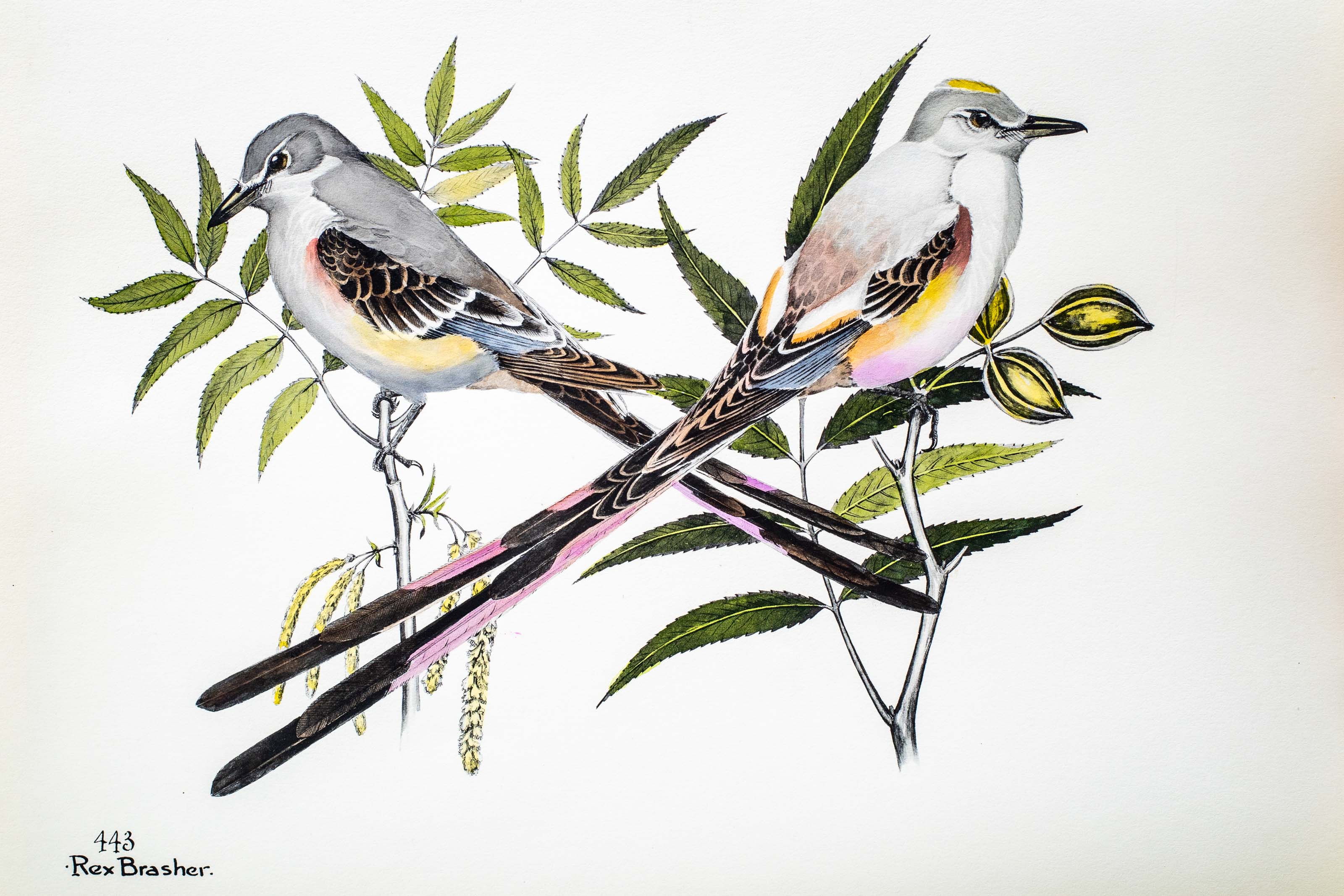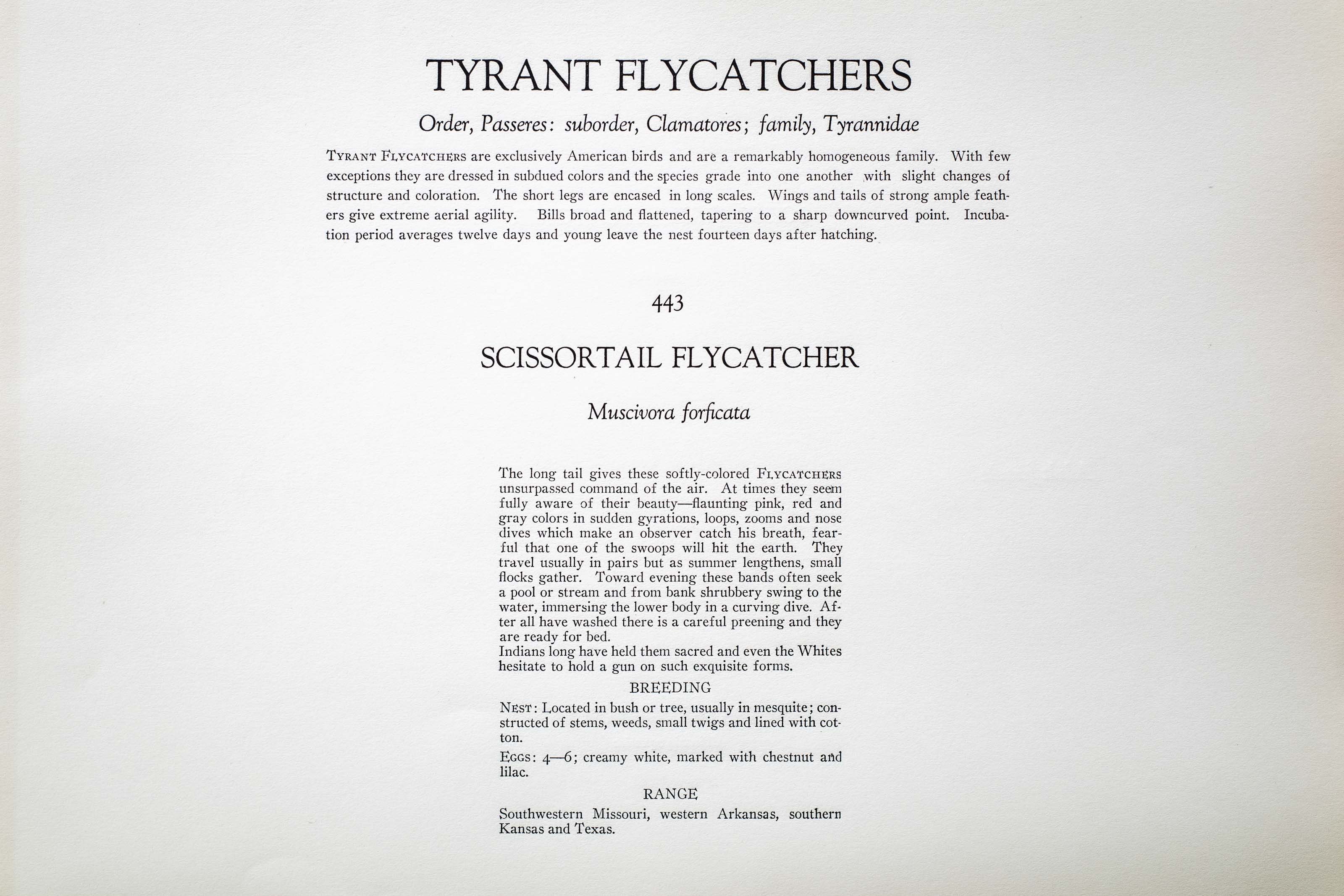






Unknown
1931
7
443
A team of dedicated board members, volunteers, and student interns has published every page in Volume 9. This volume includes 360 images of paintings and lyrical descriptions of birds, now available online for everyone to enjoy anywhere in the world. This is a monumental task. Each volume requires approximately 400 hours to photograph, edit, transcribe, catalog, and publish online. We need your support to complete this work.
If you're tech-savvy, have a good eye, are meticulous with details, and love structured data, please consider volunteering by emailing us at hello@rexbrasher.org.
We encourage all bird lovers and supporters to consider a monetary donation to support our mission to make Rex's work available for everyone. You can provide a one-time or recurring donation online.
The long tail gives these softly-colored FLYCATCHERS unsurpassed command of the air. At times they seem fully aware of their beauty — flaunting pink, red and gray colors in sudden gyrations, loops, zooms and nose dives which make an observer catch his breath, fearful that one of the swoops will hit the earth. They travel usually in pairs but as summer lengthens, small flocks gather. Toward evening these bands often seek a pool or stream and from bank shrubbery swing to the water, immersing the lower body in a curving dive. After all have washed there is a careful preening and they are ready for bed.
Indians long have held them sacred and even the Whites hesitate to hold a gun on such exquisite forms.
NEST: Located in bush or tree, usually in mesquite; constructed of stems, weeds, small twigs and lined with cotton.
EGGS: 4–6; creamy white, marked with chestnut and lilac.
Southwestern Missouri, western Arkansas, southern Kansas and Texas.
A tree up to 100 feet high, distributed in swamps from Virginia along the coast to central Florida; and thru the Gulf States to the valley of the Brazos River, Texas.